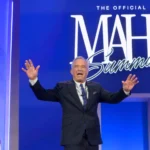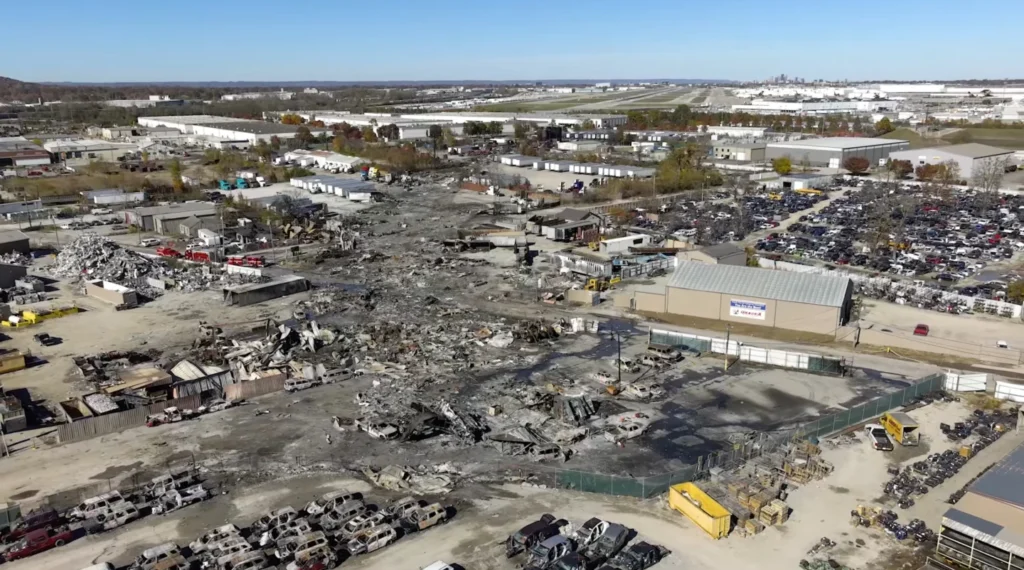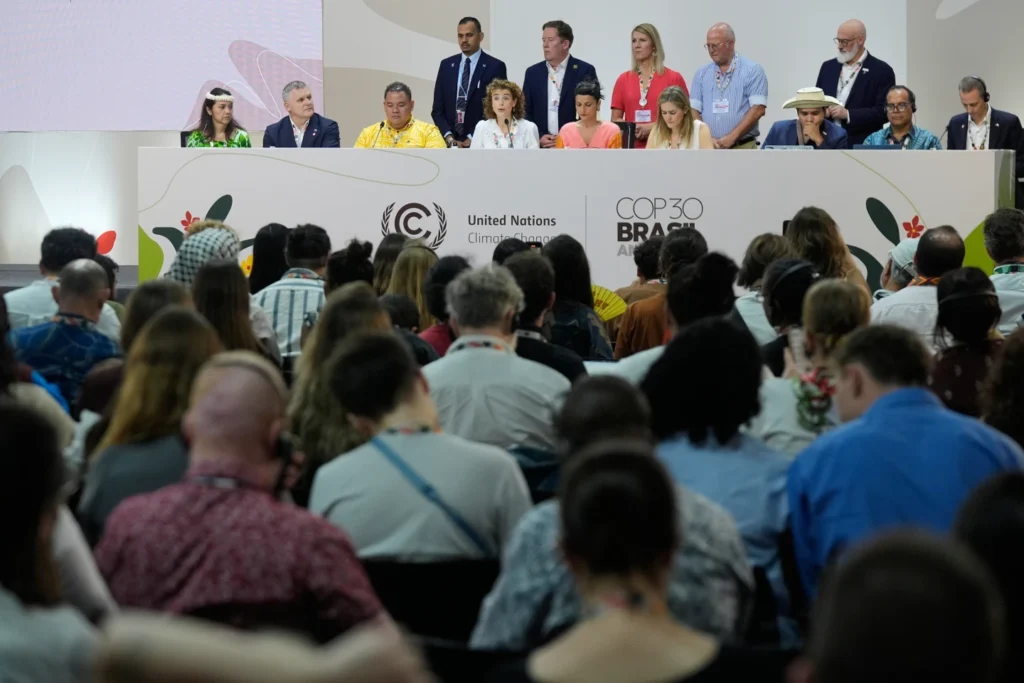The Supreme Court May Be About To Deal A Final Blow To The Voting Rights Act

The march for voting rights from Selma, Alabama, to the capital of Montgomery in 1965 wasn’t meant to lead to the passage of the Voting Rights Act. But then came the horror of the scenes on the Edmund Pettus Bridge, where police fractured the late John Lewis’ skull and beat organizer Amelia Boynton unconscious, with much of the violence caught on camera. It swayed public opinion: President Lyndon Johnson delivered the voting rights bill to Congress soon after, and it became law on Aug. 6, 1965.
“So, we will move step by step — often painfully but, I think, with clear vision — along the path toward American freedom,” Johnson said upon signing the bill.
Sixty years later, opponents of the Voting Rights Act have moved step by step, often painfully, backwards on that path. In the hands of conservative opponents of voting rights, the Supreme Court has subjected the Voting Rights Act to death by a thousand cuts. Some of those cuts have been small, such as limiting how courts consider challenges brought under the law. And some have been large, as in the 2013 decision in Shelby County v. Holder that ended the requirement for certain states with histories of discrimination to submit election changes and district maps to the Department of Justice for approval.
As the Supreme Court delivers decisions that will irrevocably alter our democracy, independent journalism is more vital than ever. Your support helps HuffPost hold power to account and keep you informed at this critical moment. Stand with the free press. Become a member today.
But now the court appears ready for one final cut, to kill off the last remaining piece of the act that allows the people to challenge racially discriminatory election practices.
On the evening of Aug. 1, the court released its briefing question for rearguments in the case of Louisiana v. Callais, now called Callais v. Landry. That question, which is meant to instruct lawyers on what issue is under debate, asked whether Louisiana’s “intentional creation of a second majority-minority congressional district violates the Fourteenth or Fifteenth Amendments to the U.S. Constitution.” This now sets up arguments about whether Section 2 of the Voting Rights Act, the last remaining bulwark of the law post-Shelby County, is unconstitutional for requiring the use of race in some instances of redistricting. The court will hear arguments on Oct. 15, early enough for a decision that could impact the 2026 midterms.

Section 2 bans electoral practices that lead to “a denial or abridgment of the right … to vote” and that leave minority voters with “less opportunity … to participate in the political processes and to elect representatives of their choice” than white voters. Under the law, people can challenge electoral practices they believe violate that law in court, whether the practices allegedly infringe on voter access or deny representation through gerrymandering.
A decision that declares Section 2 unconstitutional would leave the act toothless and threaten the existence of minority representation, particularly Black representation, across the South.
“If this goes the way it looks like it’s going to go, it’s going to be Shelby County on steroids,” said Nicholas Stephanopoulos, law professor at Harvard University. “This is going to be the single most catastrophic moment for minority voters since the 1870s or 1880s.”
Louisiana v. Callais first came before the court in 2025 as part of a yearslong series of Voting Rights Act cases stemming from the state’s 2021 congressional redistricting. The initial map adopted by the white- and Republican-dominated state government included just one Black-majority district out of seven, despite the Black population accounting for one-third of the state’s population. Black Louisianans brought a Section 2 challenge to the map, saying that it violated Section 2 by denying a second Black-majority seat when a cohesive and compact district could be drawn. They won before a three-judge appeals court panel.
To comply with the ruling, the Republican-run state government redrew its maps to accommodate a second Black-majority district, but it also used the occasion to shore up districts held by Republicans Speaker Mike Johnson and Rep. Julia Letlow. The new district took an odd shape, stretching 250 miles from Shreveport to Baton Rouge.
A group of “non-African American” plaintiffs then challenged the new district for being drawn with too much of a reliance on race: While the Voting Rights Act requires race to be taken into consideration in certain instances, Supreme Court precedent states that the consideration of race cannot be the main factor, or else it could violate the 14th Amendment’s Equal Protection Clause.
Both the state of Louisiana and the original Black plaintiffs, represented by the NAACP Legal Defense Fund, found themselves on the same side defending the new district map. Louisiana claimed that the lines for the new district were drawn according to politics, a permitted factor, not race. The Supreme Court heard arguments in March, at the time centering on whether race or politics predominated. But it chose not to issue a ruling by the end of the term. Instead, it announced that it would rehear the case with a new question to come. Now, we know that question.

Even raising the question of whether Section 2 of the Voting Rights Act violates the 14th and 15th Amendments has set off alarm bells in the voting rights community. One big reason why is because of what Justice Brett Kavanaugh wrote in a concurrence for a very similar case in 2022.
In Allen v. Milligan, the court upheld a lower court ruling requiring Alabama to draw a second Black-majority district under Section 2 by a 5-4 vote. In dissent, Justice Clarence Thomas argued that, despite Congress’ reauthorization and updates to the Voting Rights Act, Section 2 cannot continue forever into the future. Since the act was amended in 1982, whatever discriminatory practices that it was meant to remedy are no longer applicable 42 years later, he argued, so it must have an end date as it “lacks any such salutary limiting principles.” Kavanaugh concurred, adding hints of what arguments future cases could bring.
“The authority to conduct race-based redistricting cannot extend indefinitely into the future,” Kavanaugh wrote. “But Alabama did not raise that temporal argument in this Court, and I therefore would not consider it at this time.”
During oral arguments in Louisiana v. Callais in March, Kavanaugh was almost entirely focused on this “temporal argument.”
“On equal protection law, the Court’s long said that race-based remedial action must have a logical end point, must be limited in time, must be a temporary matter. How does that principle apply to Section 2?” Kavanaugh asked.
And now the court is re-hearing that case with the question of Section 2’s constitutionality raised.
“There’s a disagreement on the court and they want to use this case to resolve that disagreement,” said Justin Levitt, a law professor at Loyola Law School.
If Kavanaugh’s “temporal argument” is at the heart of this disagreement, then there may now be five votes to either greatly limit Section 2’s reach or kill it entirely. That could have a cataclysmic impact on minority representation in Congress, state legislatures, city councils, county boards and any other office that relies on district line drawing.
“If this were to happen it would mean that scores and scores of districts that everyone thinks are now protected by Section 2 would no longer have any particular reason to exist the way they do,” Stephanopolous said.
Just look at what happened after the court disabled Section 5 of the Voting Rights Act in its Shelby County decision. Southern states, whose histories of discrimination required them to get changes to voting policies approved before enacting them, quickly moved to enact restrictive voting rules. In North Carolina, a federal court found that GOP lawmakers had “target[ed] African Americans with almost surgical precision” and struck down their election law under Section 2.
Section 2 was then, and is still now, an available tool for plaintiffs to bring racial discrimination and dilution cases. In Shelby County, Roberts explicitly stated that Section 2 remained a “permanent” recourse for racially discriminatory actions even if Section 5 would be disabled. When Alabama and Louisiana redrew their maps in 2021, courts forced them to redraw them with additional Black-majority seats.
“If this goes the way it looks like it’s going to go, it’s going to be Shelby County on steroids. This is going to be the single most catastrophic moment for minority voters since the 1870s or 1880s.”
But now the response to that Louisiana case threatens to end what Roberts only 12 years ago called “permanent.” If the court finds Section 2 to be unconstitutional, it could lead to a racial version of what the country is currently seeing with partisan gerrymandering after the court said that could not be litigated in federal courts in its 2019 decision in Rucho v. Common Cause.
Black and Latino majority districts across the South and beyond could be wiped out. Black congressional and state legislative representation that boomed post-1965 could be completely reversed with the elimination of the 11 Black majority districts, all held by Democrats, across GOP-controlled Southern states and countless Black majority state legislative districts. If the court holds that the use of race in drawing districts at all is unconstitutional, then these states would have free rein — even legal justification — to eliminate these districts.
“We would quickly see a return to all white congressional delegations and in state legislative chambers and local maps in many places around the country,” Stephanopolous said. “This would be a much bigger deal than Shelby County. It would apply nationwide.”
And while “the most likely outcome is a devastating outcome,” based on the fact that the court is re-hearing this case with the new constitutionality question, according to Stephanopolous. It isn’t a foregone conclusion.
“This might be a very big deal at the end of the day, but it also might not,” Levitt said.
There are any number of off-ramps for the court to take in Louisiana v. Callais to avoid striking down Section 2. They could find that politics predominated over race in drawing the new district, or that the state should simply redraw a new district that is more compact or restrict the use of Section 2 without killing it entirely.
But these were, by and large, potential options available for the justices when they first heard the case this spring. Instead, they chose to re-hear the case with a new question.“They’ve made a hard case for themselves out of nothing,” Levitt said.
The end result may be the end of the Voting Rights Act and the full realization of representative democracy it brought to life over the past 60 years. It would mark the country stepping off that path toward American freedom.
: 132







